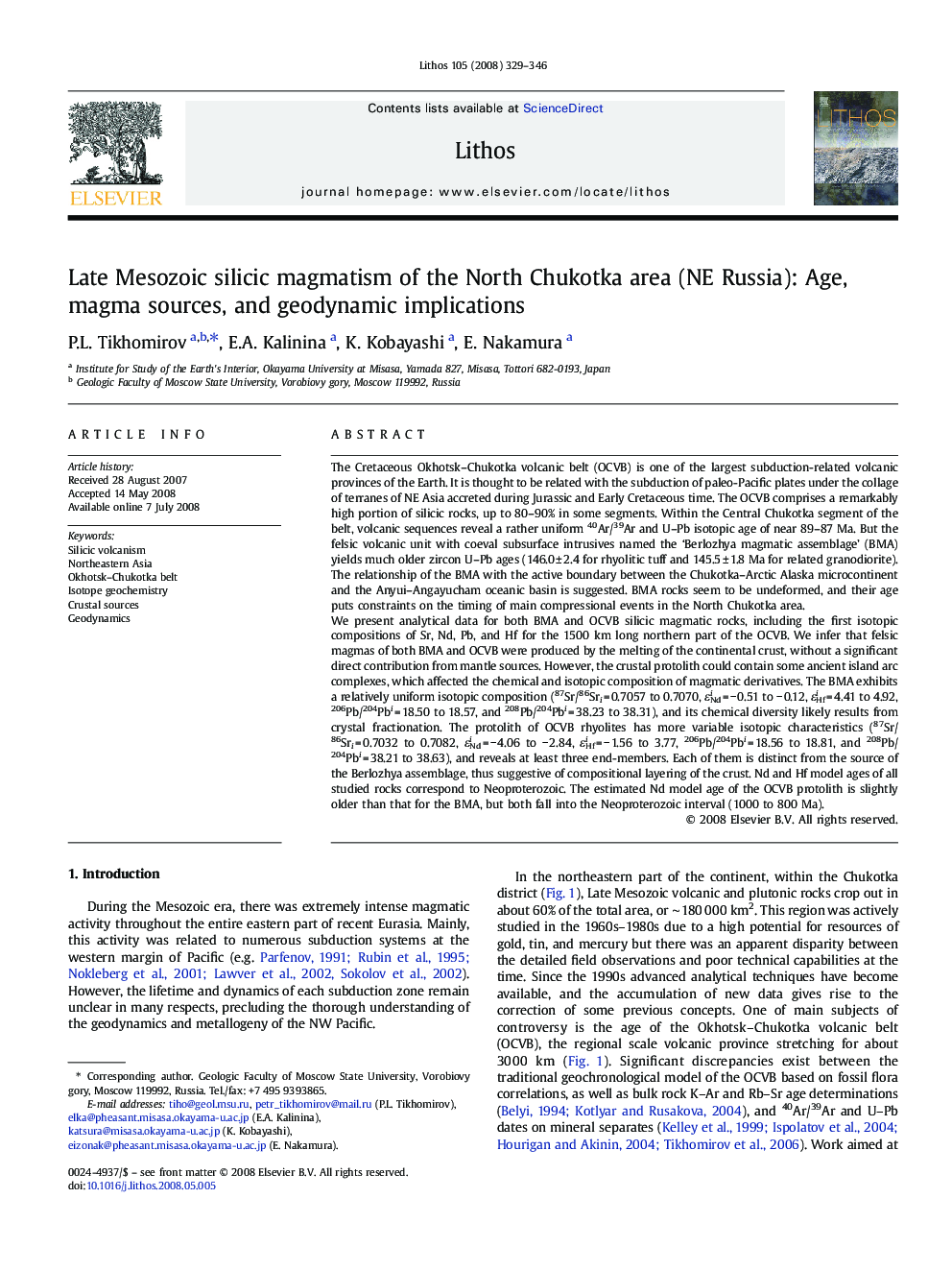| Article ID | Journal | Published Year | Pages | File Type |
|---|---|---|---|---|
| 4717576 | Lithos | 2008 | 18 Pages |
Abstract
We present analytical data for both BMA and OCVB silicic magmatic rocks, including the first isotopic compositions of Sr, Nd, Pb, and Hf for the 1500 km long northern part of the OCVB. We infer that felsic magmas of both BMA and OCVB were produced by the melting of the continental crust, without a significant direct contribution from mantle sources. However, the crustal protolith could contain some ancient island arc complexes, which affected the chemical and isotopic composition of magmatic derivatives. The BMA exhibits a relatively uniform isotopic composition (87Sr/86Sri = 0.7057 to 0.7070, εNdi = â 0.51 to â 0.12, εHfi = 4.41 to 4.92, 206Pb/204Pbi = 18.50 to 18.57, and 208Pb/204Pbi = 38.23 to 38.31), and its chemical diversity likely results from crystal fractionation. The protolith of OCVB rhyolites has more variable isotopic characteristics (87Sr/86Sri = 0.7032 to 0.7082, εNdi = â 4.06 to â 2.84, εHfi = â 1.56 to 3.77, 206Pb/204Pbi = 18.56 to 18.81, and 208Pb/204Pbi = 38.21 to 38.63), and reveals at least three end-members. Each of them is distinct from the source of the Berlozhya assemblage, thus suggestive of compositional layering of the crust. Nd and Hf model ages of all studied rocks correspond to Neoproterozoic. The estimated Nd model age of the OCVB protolith is slightly older than that for the BMA, but both fall into the Neoproterozoic interval (1000 to 800 Ma).
Related Topics
Physical Sciences and Engineering
Earth and Planetary Sciences
Geochemistry and Petrology
Authors
P.L. Tikhomirov, E.A. Kalinina, K. Kobayashi, E. Nakamura,
